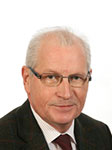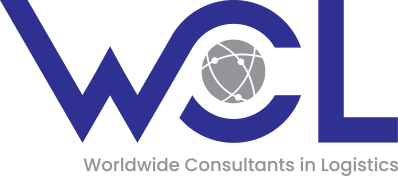– lessons from 45 years’ experience in logistics
By Alessandro Pasetti
I had yet to be born in the early 1970s, when Hans Willam (pictured above), chairman of WCL Worldwide Consultants in Logistics GmbH, Germany, already had a few years under his belt in logistics, working for Swiss 3PL Kuehne + Nagel (K+N), the undisputed ocean freight market leader with over 4m teu shipped worldwide.
I asked Mr Willam to break down his experience over four decades – the changes he witnessed and what he has learned. Moreover, I have asked him to flag the major extraordinary corporate finance events of the past 40 years, such as deals – M&A or large capital funding – that have shaped the logistics industry forever and proved to be landmarks for others. Here is his story.
A bit of background
HJW: “I spent 20 years with K+N, four years with Danzas (now DHL) and a few years in two mid-sized freight forwarding companies. For most of my professional life, I was based in Europe but I also worked three years in Asia and four years in the US.”
Early 70s
HJW: “In 1973, my sister-in-law worked for K+N, and suggested to apply for an apprenticeship. I did, and K+N accepted my application, because they were impressed with my career as football [soccer] referee. Starting date: February 1, 1974. I don’t think this would happen today.”
The first 10 years in logistics
HJW: “At the end of my apprenticeship I had looked after an important, and highly profitable, customer. So K+N offered me my first full-time job in ocean imports. During that time, everyone wanted to be involved in exports, but I liked the fact that there was a chance to control the business from the date a purchase order was issued until the shipment was delivered to the warehouse of the customer.
“But it was tough because shipping lines were not interested in letting a forwarder act as a carrier, nowadays called NVOCCs. It was also the time when so-called “outsiders” started to offer ocean services because the conference carriers, particularly the Far East Freight Conference (FEFC) charged US$4,000-$8,000 per 40ft container.
“We also started to offer groupage [LCL] container services. Given the financial success I enjoyed, K+N sent me to Taiwan to run its ocean freight business in January 1981. On 10 December in that year we signed the first ever time volume contract [today known as a service contract] for transpacific eastbound (TP EB). The dead freight penalty was US$3,200 per 40ft!
“Since then, other forwarders witnessed our success stories and kind of copied K+N. That was just the beginning of a new era for our industry.”
After Taiwan…
HJW: “Due to the growth and success in the TP EB business, K+N asked me to move to New York. I started on 1 January 1984. Our office was in the World Trade Center, on the 77thfloor. 95% of the business was controlled in the US, and I was incredibly pleased to be part of K+N’s success story there.
“We became the strongest European player on the TP EB by 1987. With the 1984 Shipping Act, the final part of the NVOCC industry was regulated although there were certain shipping lines that refused to work with NVOCCs. But others saw the advantage of letting an NVOCC look after BCOs and get volumes without major investments in sales forces.”
Leaving New York is never easy
HJW: “I left at the end of 1987 because I had to make a personal decision: either to stay in the US for longer or to move back to Germany and send my kids to school there. As it turned out, K+N offered me a very enticing role in Hamburg. At that time, there was fierce competition within K+N – it was Hamburg vs. Bremen.
“In agreement with Mr. Kuehne, we formed an “alliance” which was lead and managed by KN Bremen, which allowed me to focus on Western Europe. Even in those years, most forwarders were still focusing on the export business and we, at K+N, continued to further develop imports.
“Maybe this was a key reason why K+N became the world’s market leader in global ocean freight. In 1990, K+N asked me to move to its corporate headquarters in Switzerland. Instead, I joined Danzas when I was given the opportunity to run all their products. I was thankful, given the geographical responsibilities. But in 1994, I got a call from K+N…”
It was worth it
HJW: “K+N was looking for a ‘global head of ocean freight’, based in Hamburg. They asked me if I was interested in coming back. I did and had three very interesting additional years with K+N. Global volumes continued to grow, and the ebit of ocean freight was approximately two-thirds of group ebit.
“Thanks to K+N understanding ‘carrier relationship management’, we enjoyed the support of our core carriers. They liked the fact that we had asked the carriers about their weak points and offered help, in particular to avoid, or reduce, empty container positioning cost. Very exciting times.”
Leaving K+N
HJW: “In my global role, I reported to Mr. Kuehne. When he told me that he would give up as group chief executive, I decided to entertain an offer which I had rejected previously. I became the chief executive of a mid-sized global logistics service provider, attracted by the package they offered, among other things. But I did not expect mid-sized companies to be so weak in terms of operational control and other crucial aspects of the day-to-day business. In short, I learned a lot.”
Never look back
HJW: “In 1999 I finally decided to launch my own consulting firm but quickly had to put it dormant because one of my target clients – France’s Geodis – asked me to work for them full-time rather than as a consultant. I was based in Paris, and it was a very interesting moment in my professional life.
“Particularly, the culture and the corporate tree of Geodis were problematic. The company asked me to replicate the success of K+N. I then tried to explain why K+N is so successful (structure, continuity, commitments, products, P&L discipline, just discipline, etc etc.). So, in 2001 I was again running my own company. Thanks to the personal support of Mr. Kuehne, K+N became the first large client of WCL.”
20th birthday
HJW: “This is a big year for us. Over time we have added products, appointing quite a number of global WCL representatives. I am pleased with the achievements. We started in recruitment and consulting. Today, we offer global recruitment, including executive search, mergers and acquisitions advisory, NVOCC implementation projects and consulting.
“That’s a good mix if you aim to work with large, medium and small clients. We continue to focus on working with LSPs. Among the top 10 ocean/air LSPs, more than half of them work with us. Thanks to long-term relationships, including personal relationships, WCL is looking forward to the future challenges in an industry that is changing swiftly. We have never really worked with shipping lines or airlines. Maybe that’s one more reason why we still enjoy dealing mainly with our LSP clients.”
The carriers and others…
HJW: “Let me mention three out of many key factors behind the latest changes. Firstly, the fact that the shipping lines are now down to approximately seven major players influences the margins of the LSPs – some of these shipping lines will seriously invest in logistics subsidiaries, and that is another factor.
“Secondly, digitisation is crucial. I am including transportation management systems (TMS) considerations as well. It will boil down to “who will have the lowest production cost”? On the gross profit side, most LSPs nowadays have similar margins, but ultimately ebit hinges on production cost.
“Thirdly, new players such as Flexport or FreightHub are successful in collecting top dollars from investors, but many large LSPs have already reacted and will continue to create customer friendly tools. These dynamics are going to somewhat change the market, but I believe that the large LSPs will continue to serve their customers and the impact of start-ups will be limited.”
Key corporate finance events of the past four decades
HJW: “The fact that Damco became the global market leader in ocean-based supply chain solutions was due to Maersk Line taking over Sealand (including the subsidiary Buyer’s Consolidators), then DSL [Distribution Service Ltd] thanks to the largest customer of DSL – Walmart – asking Maersk Line to ensure that necessary investments in IT would be made and the takeover of P+O Nedlloyd, including Damco. After all these years, it appears that it never paid off for APMM. Actually, it is a shame.”
“The takeover of BAX Global by Deutsche Bahn and the subsequent merger with DB Schenker is another big one. Certainly, it helped DB Schenker grow volumes but it is hard to believe that it was financially attractive. Considering that some of the losses were most probably absorbed by DB, I don’t think the investment paid off. But the competition was not happy to see that a 100% state-owned company was investing in the global forwarding business, judging by comments made particularly by Mr. Kuehne.”
“DSV has proven that it can handle the integration of large companies (ABX and UTi). Thus, a different business model was created – M&A instead of solid organic growth. But you have to respect the work done by DSV.”
“You may also want to include Deutsche Post taking over DHL, Danzas and AEI. After a couple of tough financial years results were acceptable. But with the NFE project of Roger Crook… that was a disaster for DHL Global Forwarding (DGF). Things appear to be on track now, particularly since Tim Scharwath became CEO of DGF and DHL Freight.”
Another senior industry executive will share his 50-year experience with our readers next week. If you have spent at least 40 years within logistics, and want to share your experience, please get in touch with me at alessandro@theloadstar.co.uk.
This article is exclusive Loadstar Premium content. The Loadstar has authorised WCL Worldwide Consultants in Logistics to publish it 48 hours after it was first posted here.


